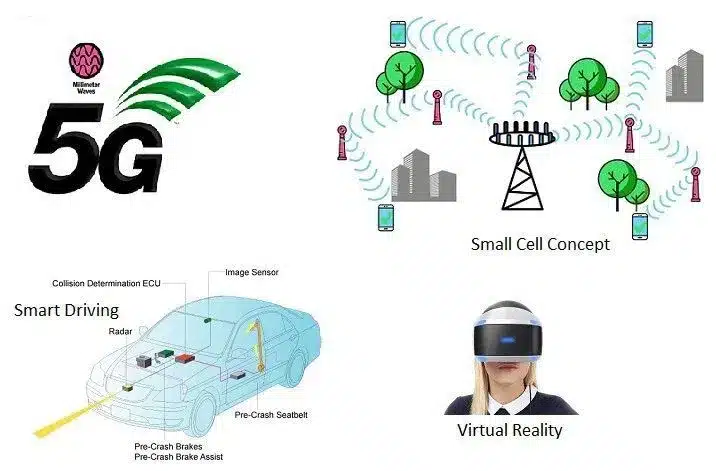About Millimeter Wave:
- It refers to electromagnetic waves with frequency between 30-300 GHz and wavelength between 10 mm and 1 mm.
- Its frequency spectrum is used for wireless high-speed communications. It is also known as the extremely high frequency, or EHF, band by the International Telecommunication Union.
- Advantages
- It enables higher data rates compared with lower frequencies when used in telecommunications, such as those used for Wi-Fi and current cellular networks.
- The higher frequency range has a high tolerance for bandwidth.
- It offers less latency due to its higher speeds and bandwidth.
- There is less interference, as mmWaves don’t propagate and interfere with other neighboring cellular systems.
Significance of recent agreement
- It will also encourage small and medium scale industries to setup their manufacturing units in India which will create job opportunities to our own engineering graduates, due to the use of polymer-based structure in conjunction with metals.
- This will also reduce our over dependence on semiconductor fabrication industries. The proposed cost for the development of technology is extremely small as against the opportunities it would create.
- Additionally, the project also aims to contribute to generate Intellectual Property Rights (IPRs) and develop a skilled workforce to support the emerging millimetre wave/Sub-THz technology for 5G/6G.
Q1: What are Electromagnetic waves?
Electromagnetic waves such as light are generated by the vibration (energy transformation) of electrically charged particles. These waves are characterised by their oscillating electric and magnetic fields, which move perpendicular to each other and the direction of wave propagation.
News: C-DOT, IIT-Roorkee tie-up to develop millimeter wave transceiver for 5G rural connectivity
Last updated on December, 2025
→ Check out the latest UPSC Syllabus 2026 here.
→ Join Vajiram & Ravi’s Interview Guidance Programme for expert help to crack your final UPSC stage.
→ UPSC Mains Result 2025 is now out.
→ UPSC Notification 2026 is scheduled to be released on January 14, 2026.
→ UPSC Calendar 2026 is released on 15th May, 2025.
→ The UPSC Vacancy 2025 were released 1129, out of which 979 were for UPSC CSE and remaining 150 are for UPSC IFoS.
→ UPSC Prelims 2026 will be conducted on 24th May, 2026 & UPSC Mains 2026 will be conducted on 21st August 2026.
→ The UPSC Selection Process is of 3 stages-Prelims, Mains and Interview.
→ UPSC Result 2024 is released with latest UPSC Marksheet 2024. Check Now!
→ UPSC Prelims Result 2025 is out now for the CSE held on 25 May 2025.
→ UPSC Toppers List 2024 is released now. Shakti Dubey is UPSC AIR 1 2024 Topper.
→ UPSC Prelims Question Paper 2025 and Unofficial Prelims Answer Key 2025 are available now.
→ UPSC Mains Question Paper 2025 is out for Essay, GS 1, 2, 3 & GS 4.
→ UPSC Mains Indian Language Question Paper 2025 is now out.
→ UPSC Mains Optional Question Paper 2025 is now out.
→ Also check Best IAS Coaching in Delhi

















